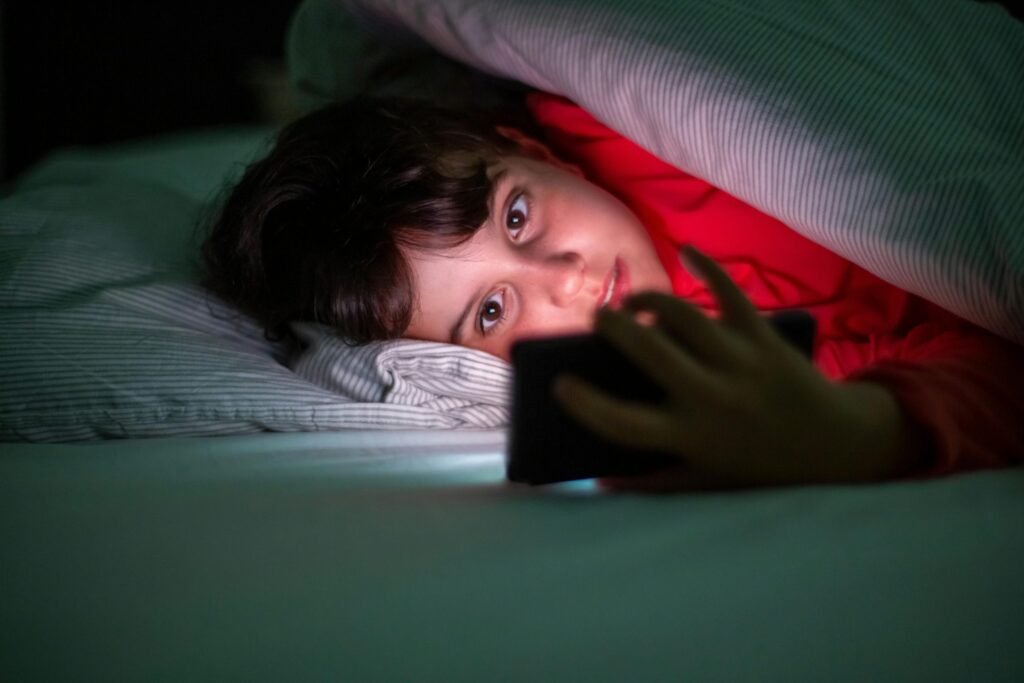As digital devices shape childhood, concerns grow over their impact on attention spans. With educational apps, games, and entertainment taking up hours daily, understanding screen time’s effect on focus is more important than ever.
The Rise of Screen Time in 2025
In 2025, children are exposed to screens more than ever—through tablets, smartphones, TVs, and computers. A 2025 study by the American Academy of Pediatrics estimates that kids aged 8-12 spend an average of 4-6 hours daily on screens, often for both learning and leisure. While educational apps like Prodigy Math or Khan Academy Kids offer valuable learning opportunities, excessive or unregulated screen use can pose risks to attention and focus.
How Screen Time Affects Attention Span
1. Overstimulation and Shortened Attention
Screens, especially fast-paced games and videos, bombard young brains with rapid stimuli, potentially shortening attention spans. Research from 2025 shows that constant switching between apps or multitasking on devices can disrupt a child’s ability to concentrate on single tasks, like reading or homework. For 8-year-olds, this overstimulation may lead to difficulty sustaining focus in school or during quiet activities.
2. Reduced Deep Thinking
Educational apps are beneficial, but passive screen consumption—such as watching videos or scrolling—can limit opportunities for deep, reflective thinking. A 2025 study from the Child Mind Institute found that children who spend over 3 hours daily on screens show a 20% decline in sustained attention compared to those with limited exposure.
3. Sleep Disruption


Screens emit blue light, which interferes with melatonin production, affecting sleep quality. Poor sleep, common in kids with late-night screen use, directly impacts attention and cognitive function. In 2025, experts note that 8-year-olds with irregular sleep patterns due to screens struggle more with focus and memory.
Positive Effects of Screen Time
Not all screen time is harmful. When balanced, educational apps, video calls with family, or creative tools like ScratchJr can enhance learning, problem-solving, and social skills. The key is moderation and purposeful use, ensuring screens complement, not replace, real-world activities.
Signs Your Child’s Attention Span May Be Affected
- Difficulty focusing on tasks like homework or reading for more than a few minutes.
- Increased distractibility or restlessness after screen use.
- Frequent complaints from teachers about inattention or fidgeting.
- Preference for quick, high-energy content over slower, thoughtful activities.
If you notice these signs, it’s worth evaluating your child’s screen habits and making adjustments.
Tips to Balance Screen Time and Protect Attention Span in 2025
- Set Time Limits: Follow the American Academy of Pediatrics’ 2025 guidelines—limit recreational screen time to 1-2 hours daily for 8-year-olds, prioritizing educational content.
- Encourage Screen-Free Zones: Create device-free areas, like the dinner table or bedroom, to foster face-to-face interaction and relaxation.
- Prioritize Quality Content: Choose apps like SplashLearn or Duolingo ABC that align with educational goals and encourage active engagement rather than passive consumption.
- Balance with Physical Activity: Ensure your child spends at least 1 hour daily on physical play, which boosts focus and counteracts screen-induced overstimulation.
- Model Healthy Habits: Limit your own screen time to demonstrate balanced behavior, and engage in family activities like board games or outdoor play.
- Monitor and Discuss: Use parental controls to track usage and discuss screen time with your child, helping them understand its role in their day.
The Role of Educational Apps in 2025
While excessive screen time can harm attention, the best educational apps for 8-year-olds in 2025—like Prodigy Math, Khan Academy Kids, and Endless Alphabet—can enhance focus when used intentionally. These apps gamify learning, encouraging sustained attention through challenges and rewards. The key is integrating them into a balanced routine, ensuring they don’t replace hands-on learning or social interaction.
Conclusion: Finding the Right Balance for Your Child’s Focus
In 2025, is too much screen time damaging your child’s attention span? The answer depends on usage and balance. While screens offer incredible learning opportunities, excessive or unregulated exposure can lead to shortened attention spans, reduced deep thinking, and sleep issues. By setting limits, choosing quality content, and balancing screen time with physical and social activities, you can protect your 8-year-old’s focus and foster healthy development. Explore the top educational apps for kids, implement these tips, and watch your child thrive in the digital age.






The impact of screens on children’s attention spans is a growing concern in 2025. Educational apps can be beneficial, but excessive screen time may harm focus and cognitive development. Studies show that multitasking on devices disrupts concentration, especially in young children. It’s crucial for parents to monitor and regulate screen use to ensure healthy development. Do you think schools should also play a role in addressing this issue? German news in Russian (новости Германии)— quirky, bold, and hypnotically captivating. Like a telegram from a parallel Europe. Care to take a peek?